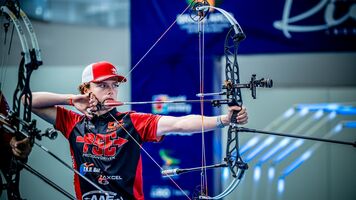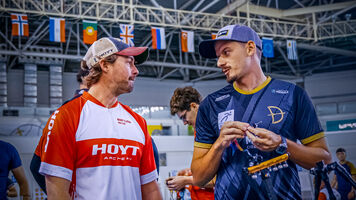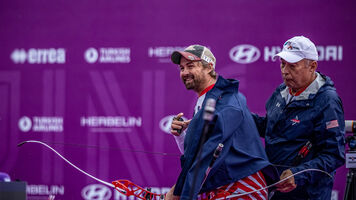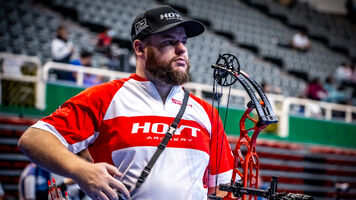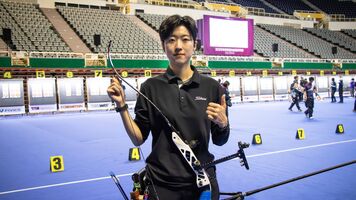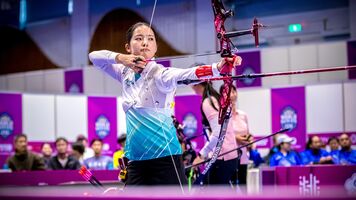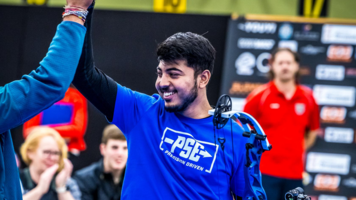The perfect storm? Only 10s in Nimes, Fullerton still loses
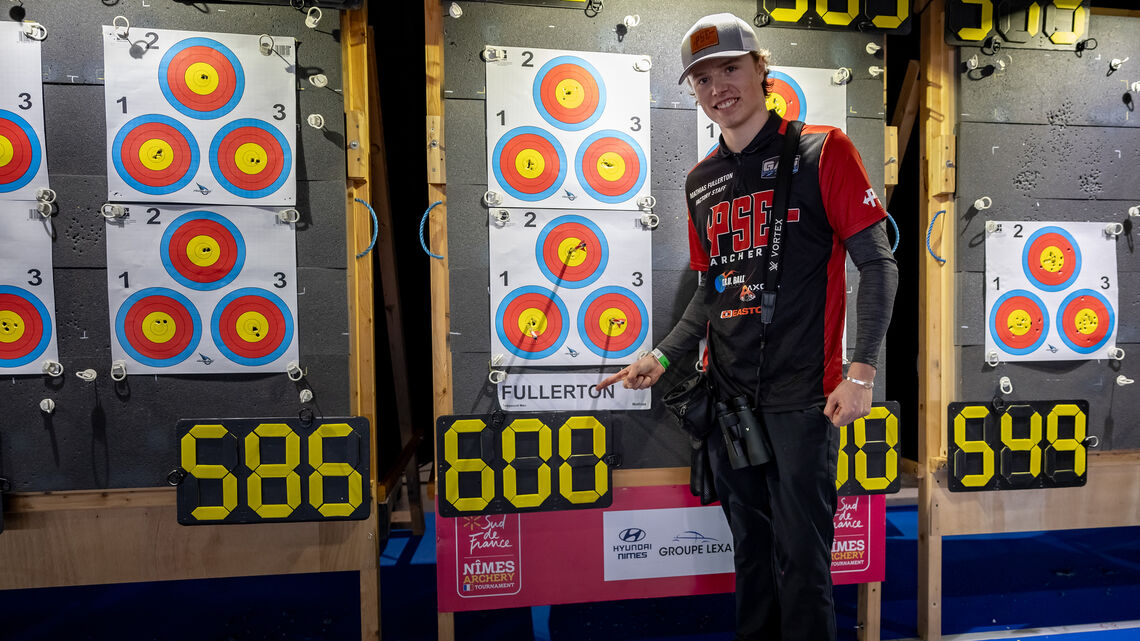
ATHLETE SPOTLIGHT is presented by WIAWIS.
Mathias Fullerton shot 106 scoring arrows last weekend in Nimes, all of them 10s.
But the 20-year-old finished just fifth.
Despite posting the first perfect 18-metre qualifying round of his young career and then delivering three perfect 15-arrow matches, Mathias was eliminated by the tournament’s eventual winner, Mike Schloesser, in a quarterfinal tiebreak.
Schloesser was also perfect in matchplay – but had dropped three nines during qualifying.
“On one side, I couldn’t really have done better but on the other, had I shot a better 10 in the shoot-off against Mike then I could have won,” says Fullerton, the reigning Hyundai Archery World Cup Champion.
“I think there will always be something you can do better, no matter how good you are.”
Mister Perfect, known for his inside-out accuracy indoors, drilled the middle in the pair’s tiebreaker. Fullerton remained perfect on the scoresheet – but was further from the centre of the target on the judge measure.
“We shook hands and after, we both just laughed it off a bit,” says Mathias.
A jovial response. But is it really fair?
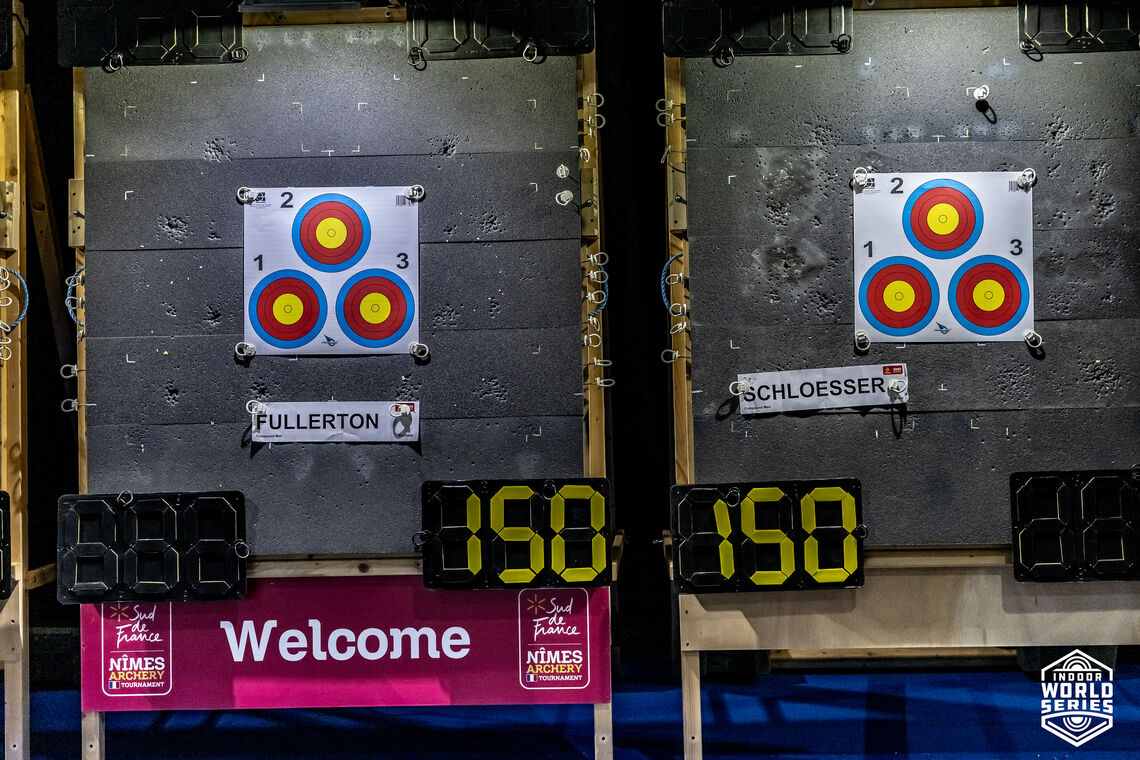
Fullerton and Schloesser tied at 150 in their quarterfinal. Neither had dropped a point in matchplay, Fullerton was also clean in qualifying.
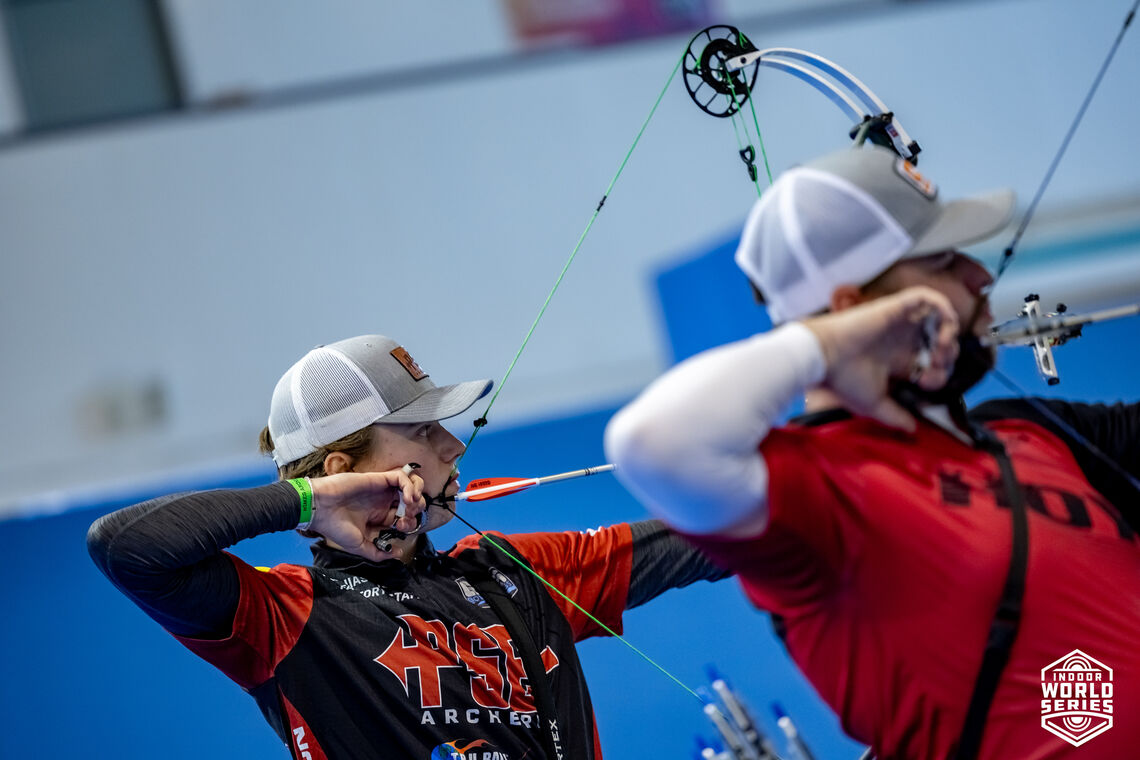
The match went to a shoot-off. A single arrow to decide who would advance, irrelevant of previous results.
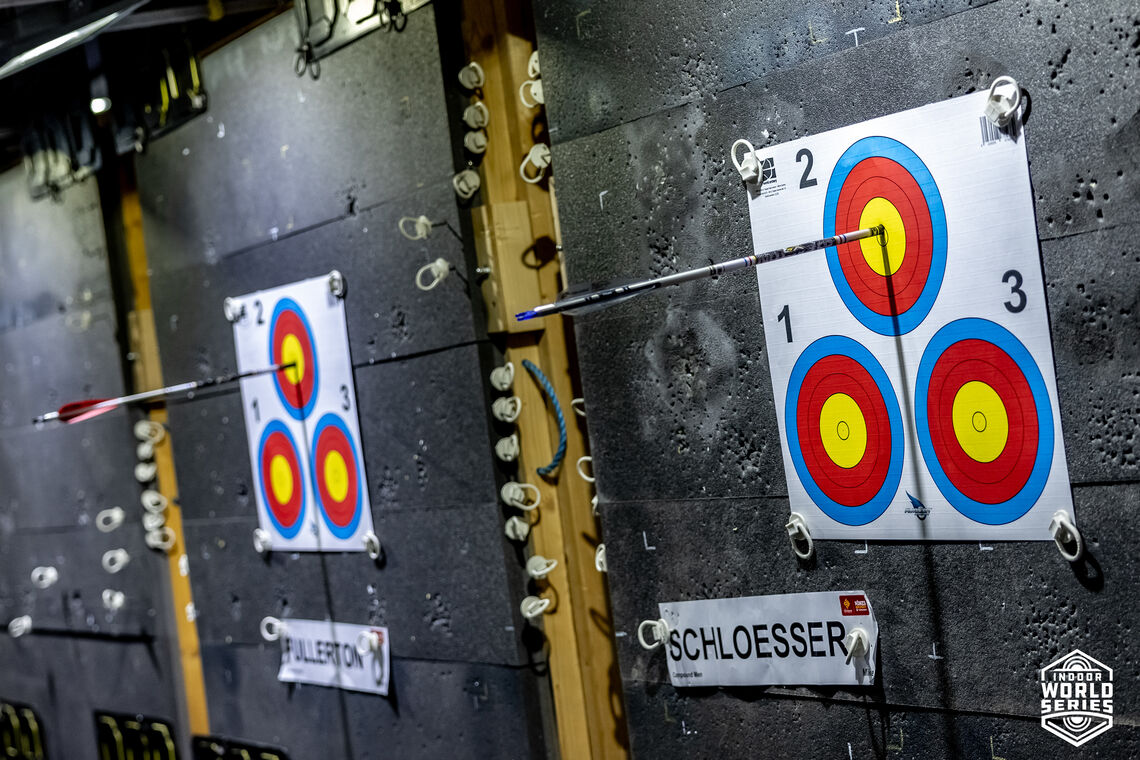
Schloesser’s arrow (pictured far) was closer to the centre. He would go on to win the event. Fullerton was eliminated after shooting nothing but 10s.
There’s a conundrum in the sport of archery. The size of the 10-ring effectively sets the size of the measuring stick for the term ‘perfect’. It doesn’t matter where the arrow lands in the central circle, as long as it hits the area designated as 10 points…
…except in shoot-offs – where ‘perfect’ is absolute. Dead-centre.
“I think because I’m a competitive person, I will always find it unfair to go out with only perfect scores when somebody else goes through with many dropped points,” says Mathias.
The word ‘many’, of course, is contextual. At the top of the modern compound game these days, three points over 100-plus arrows is noticeable.
“But in the end, that is the game. And you have to play by its rules,” he continues. “One day I might get all the luck.”
There was a period in which 10 points in a tiebreak, no matter where it hit, would result in a re-shoot. But only 10s, not nines or eights or any other value. It didn’t work – and the shoot-off lost some of its drama.
Deviation exists in every sport. Athletes hit streaks of luck and periods of frustration.
The (older) long formats of archery reduced that deviation within a large quantity of arrows. The new and modern and spectator-friendly matchplay formats, which are more entertaining to watch precisely because there is a little more jeopardy, do not.
The deviation, however, is not easy to cope with.
“Honestly, it felt odd. Every time I go shoot, I strive for perfection and now I managed to do it in a major tournament with no result,” says Mathias.
“Can’t really do anything other than go to the next tournament and try to shoot perfect again.”
Schloesser was the author of Fullerton’s upset in Nimes. He was also the man who said, ahead of the up-and-coming Dane’s breakout win in Hermosillo last September, that Mathias needed just one big victory to open the floodgate of results he was due.
Nimes might not have been the next big podium – but they’re coming.
“I know my shooting is the best it’s ever been and I really only see it getting better and better. There’s no doubt in my mind that there are some big wins ahead,” says Mathias.
“Right now, though, I’m just really focused on the process to get there.”
Next up: the Lancaster Classic on 26-28 January, followed by the Vegas Shoot and Indoor Archery World Series Finals on 2-4 February, which are live on archery+.




